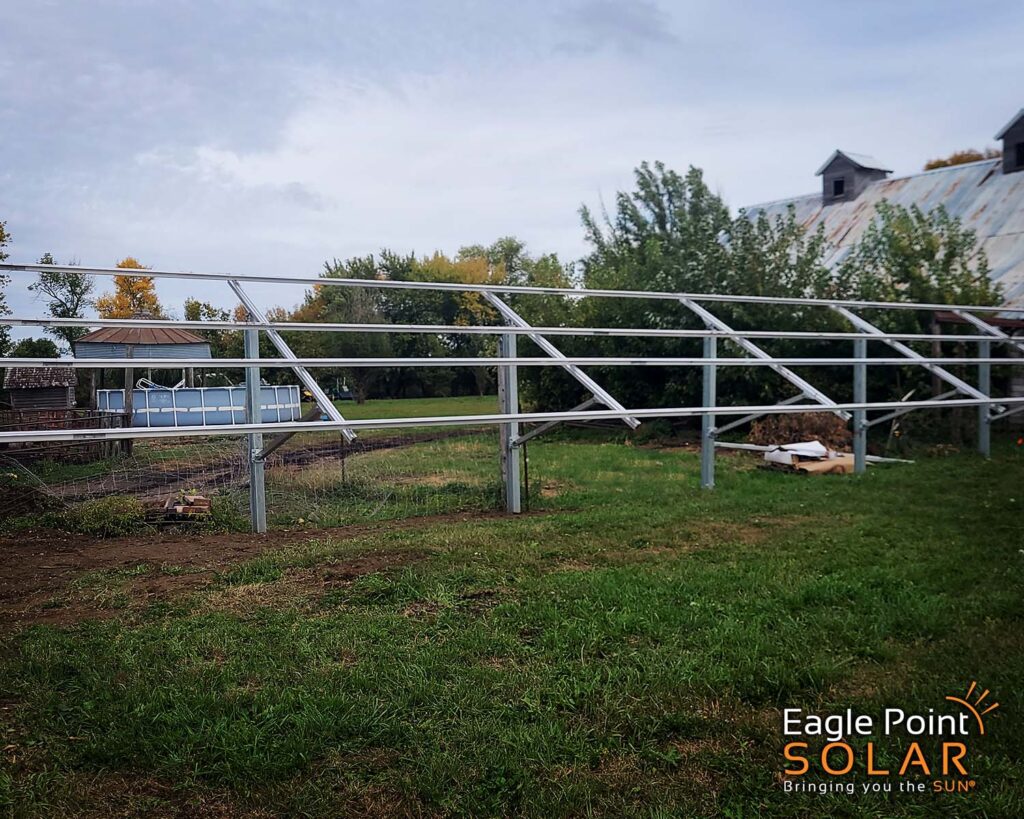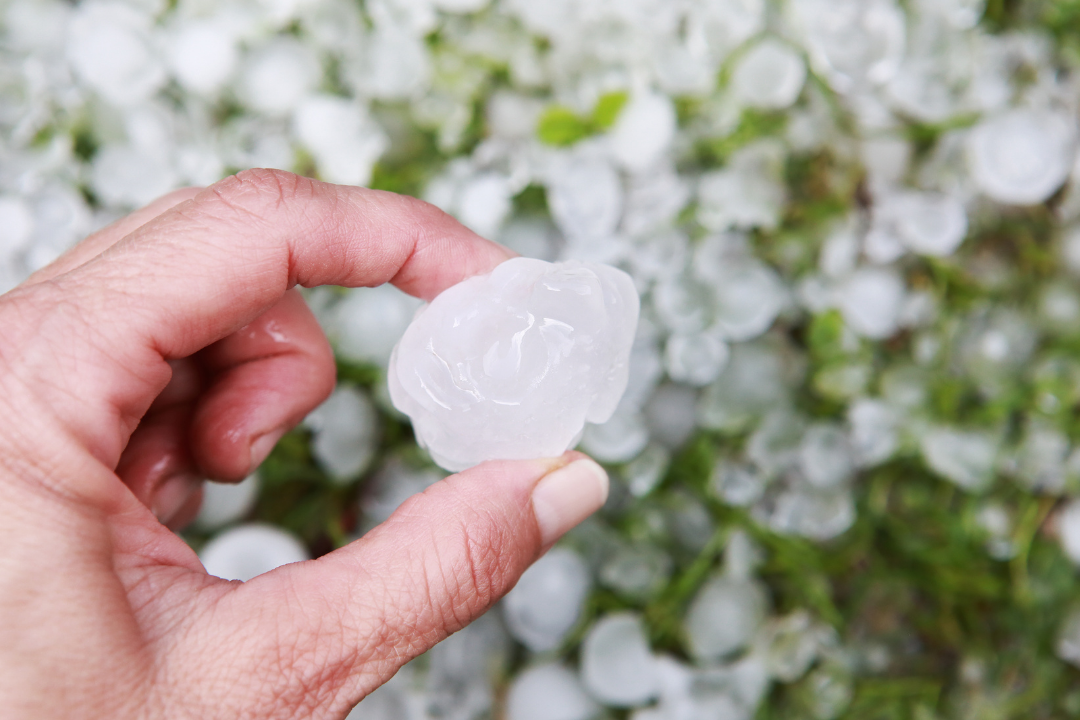Hail, Wind, and Your Solar Array
A solar array in the Midwest is constantly exposed to outdoor elements, severe hail and wind storms, and extreme seasonal temperature fluctuations. Since solar modules are primarily composed of glass, plastic, copper, and aluminum, we are often asked, “Can my solar array withstand a hail or wind storm?” The simple answer is, yes. The more complex answer is to look further into the testing and research which has been conducted by various solar manufacturers to fully understand their durability and limitations.
How Durable are Solar Modules (Solar Panels)?

High-quality solar modules (aka Tier 1 modules) are primarily made using tempered glass as the top surface material due to the ability of glass to transmit as much sunlight as possible to the solar cells underneath. Keep in mind, glass thickness and glass quality can vary across different manufacturers, so it is best to work with a reputable solar company that procures quality solar modules from trusted manufacturers.
A Tier-1 solar panel will endure rigorous manufacturing tests which inevitably will provide a wind and hail rating associated with the type of panel being sold. These tests include being able to take an impact of a 1” hailstone traveling 50 mph as well as remain firmly mounted to the ground or roof at wind speeds of 140 mph. As identified by an article published by Power From Sunlight, look for certificates of IEC* (IEC61730, IEC61215) and UL1703* on the solar panel data sheets to confirm the panel has withstood the quality and safety glass tests required to be classified as a premium solar module.1
In a recap of an article published by Energysage2, solar modules in Texas to New Jersey to Puerto Rico have proven they can successfully face historic hurricane winds, torrential rain, and devastating hailstorms unscathed. In several documented cases where rain, hail, and high winds were able to flood property, shatter car windows, dent vehicles, and topple electric poles and trees, roof and ground solar panels suffered little to no damage.
The article further outlines a report conducted by the National Renewable Energy Laboratory (NREL) on 50,000 solar energy systems installed between 2009 and 2013. The report indicates that only 0.1% of all the photovoltaic (PV) systems analyzed during a one-year period were affected when exposed to inclement weather conditions which resulted in module damage or underperformance.2
How Strong is the Solar Panel Frame and Racking?

The frame surrounding your solar module, along with the racking on which the module is mounted, is equally as important as the quality of the glass protecting the energy-producing cells. A majority of all Tier-1 solar modules are manufactured with aluminum frames. This ensures long-lasting protection which provides corrosion resistance, weight reduction and increases the durability of the panel to withstand greater snow loads and wind impact. 1, 3
Additionally, when aluminum frames or mounted together in a series to form a larger array, the frame and racking material provide the flexibility needed to bend under stress rather than stay ridged and eventually break in extreme wind and snow load situations.
What if a Solar Module Does Break?
Despite the rigorous testing and certification of a quality solar panel, the perfect storm can happen, and damage can occur. In this case, it is important to know the steps to take to lessen your financial impact and ensure your system is fully operational with limited downtime.
Insurance is recommended to cover yourself against unexpected damage. Learn more in our Do I Need Insurance on My Solar Array blog article. Another recommendation is to contact your installer and ask them about annual, bi-annual, or “as needed” maintenance and support offerings. Eagle Point Solar has a dedicated service and support team of NABCEP certified professionals available to analyze, identify and repair your solar array regardless of who built it.
Final Thoughts
Storm damage happens in the Midwest regardless of how well something is built (i.e. farm shed, silo, tractor, windmill, boat dock…or solar array). Odds are, if it sits outside, Mother Nature will put it through the paces and test its endurance. The important takeaway is ensuring you are purchasing quality equipment made to endure extreme weather like hail and choosing to partner with a reputable, experienced solar company on the design, engineering, and installation of your solar array. When combined, these two choices will pay dividends in the long term should an unlikely weather-related event take your array offline.
Sources:
1 “Why Solar Panel Glass Is Very Important When Choosing Solar Panel Type?” Power From Sunlight, 2 October 2017, https://www.powerfromsunlight.com/why-solar-panel-glass-is-very-important-when-choosing-solar-panel-type/
2 Marsh, Jacob. “Can solar panels withstand hail and survive hurricanes?” EnergySage, 8 June 2017, https://news.energysage.com/solar-panels-hail-hurricanes/
3 “Why Is The Solar Panel Frame Important?” Power From Sunlight, 29 September 2017, https://www.powerfromsunlight.com/solar-panel-frame-important/
*IEC (International Electrotechnical Commission) / UL (Underwriters Laboratory)

Questions about the durability of solar panels? Contact us to talk to an expert or check out our extensive library of FAQs.
